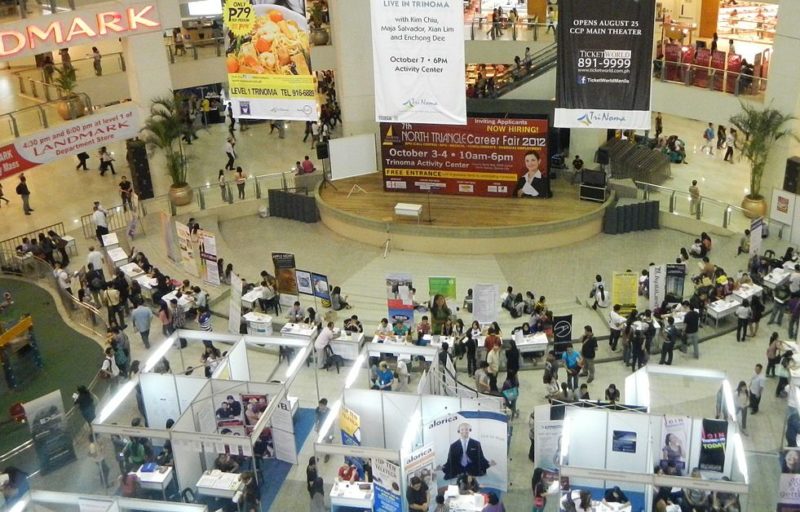 Consumer confidence in the second quarter of the year is brimming for emerging markets in Asia-Pacific, with the Philippines the most optimistic. In contrast, consumer confidence in developed economies in the region has mostly fallen, according to results of an online survey conducted by Nielsen.
Consumer confidence in the second quarter of the year is brimming for emerging markets in Asia-Pacific, with the Philippines the most optimistic. In contrast, consumer confidence in developed economies in the region has mostly fallen, according to results of an online survey conducted by Nielsen.
With 100 as the optimism benchmark, the region’s consumer confidence was relatively stable at 107, a one-point decrease from the first quarter. Six of seven emerging markets in Asia-Pacific posted optimistic above-the-baseline consumer confidence scores. However, five of seven developed markets had scores of 88 or lower, according to the Nielsen Consumer Confidence Index.
Among emerging markets, confidence in the Philippines reached a country-level high of 132 with a 13-point rise in the second quarter, said the Nielsen report. Of the three confidence indicators measured, job optimism increased the most, jumping 16 percentage points to 88% in the second quarter. Responses also showed a rise of 10 percentage points in immediate-spending intentions (61%) ,and five percentage points in favorable sentiment about personal finances (86%).
“Confidence in the Philippines is at an all-time high, and with a 6.9% GDP growth rate in the first quarter, it’s one of the fastest-growing economies in Asia,” said Stuart Jamieson, managing director, Nielsen Philippines.
“The Philippine economy relies heavily upon consumption, and with sales of consumer goods growing rapidly at a 7.1% rate in the year ending May 2016, consumer spending remains robust. The promise of greater reforms during the recent presidential elections, which took place during the survey period, likely helped buoy positive consumer sentiment.”
India (128), Indonesia (119), Vietnam (107), China (106), and Thailand (101) were other high-scoring Asian emerging markets. Only China and Indonesia showed marginal increases in consumer confidence in the second quarter, rising one and two points, respectively. Conversely, confidence declined six points in India, four points in Thailand, and two points in Vietnam from the first quarter. Malaysia was the only emerging market in the region with a below-the-baseline confidence score of 87, but that score represented an eight point increase in the second quarter.
Meanwhile, among the region’s developed economies, confidence declined or remained flat in all but two markets that were measured in the second quarter. Japan’s score fell four points to 69, the fourth consecutive quarter of decline. The next next-largest declines were in Taiwan (to 73) and New Zealand (to 96), each down three points. Hong Kong’s confidence was down one point to 87, dipping for the second consecutive quarter to the country’s lowest score since fourth-quarter 2012. Singapore’s score (88) was flat from the first quarter—but stayed at the country’s lowest score since 2009. In contrast, confidence in Australia (91) increased two points.
The economy was the biggest or second biggest concern for 31% of Asia-Pacific respondents, a decline of one percentage point from the first quarter. Worries about health and work/life balance also remained top of mind for respondents in the region.
Global consumer confidence ‘in a holding pattern’
As for worldwide consumer confidence, it held steady in the second quarter of 2016 at 98, an index score that was flat from the first quarter and two points higher than a year earlier (second quarter of 2015), said the New York-based global information and measurement company.
Confidence levels have been hovering between 96 and 99 in the three years since the first quarter of 2014. North America was the only region to sustain growth momentum in the second quarter, demonstrating a three-point increase in confidence to 111. All other regions remained essentially in a holding pattern, with relatively stable quarter-on-quarter index levels.
“Global economic growth continues to be sluggish, with wide variation in growth rates,” said Louise Keely, senior vice president of Nielsen. “Economic concerns such as weak commodity prices and job prospects, and political concerns, such as terrorism and political stability, have been higher among consumers in countries directly affected by situations such as terrorist attacks and soft commodity demand. Still, in many markets consumer spending continues to be a bright spot. Consumer confidence, while below 100 in many countries, has remained stable, on average, over the past several quarters.”
A year ago, only 12 markets out of 61 covered in the survey reached the optimism benchmark of 100—a number that was unchanged in the most recent second-quarter results (12 out of 63 markets).
Aside from the emerging markets of Asia-Pacific, other markets reaching or exceeding a score of 100 in the second quarter of 2016 included the U.S., Denmark, United Arab Emirates, Pakistan, Saudi Arabia, and Peru.
In the latest online survey, conducted May 9 to May 27, 2016, consumer confidence increased in just over half (56%) of measured markets. Among the world’s largest economies, the U.S. had a consumer confidence score of 113, marking the 10th consecutive quarter in which the U.S. score was at or above the optimism baseline. In both China (106) and the U.K. (98), confidence increased one index point each from the previous quarter, and it decreased one point in Germany (96). In Japan (69), confidence decreased four points.
The Nielsen Consumer Confidence Index measures perceptions of local job prospects, personal finances, and immediate spending intentions. Consumer confidence levels above and below a baseline of 100 indicate degrees of optimism and pessimism, respectively.
Photo: Ramon FVelasquez





